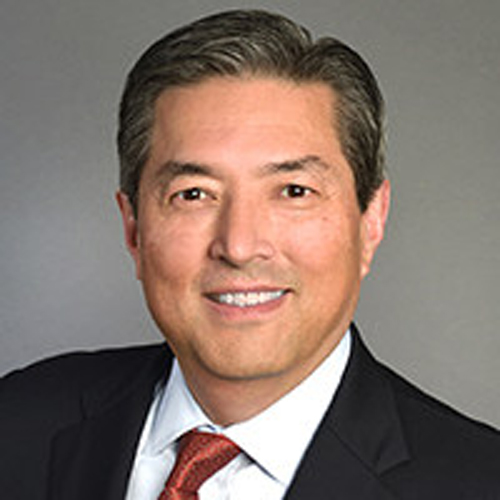The healthcare supply chain – both suppliers and providers – have received a lifetime of learning in two years.
September 2022 – The Journal of Healthcare Contracting


When thinking about trends and stories to watch for the near future, it is useful to reflect on the incredible run of recent events. The healthcare supply chain has experienced several lifetimes of learning in just two years. We’ve faced one black swan event after another – pandemics, port delays, record inflation, and spot shortages of critical goods among others. We’ve had to prepare for the unpredictable as well as the unimaginable. There have been benefits to confronting these challenges as an industry. Looking ahead to the rest of the year – and beyond – the Health Industry Distributors Association (HIDA) sees the following issues and challenges facing the industry.
1. Supply chain delays aren’t going away …
Healthcare distributors have seen no reprieve from the delays and backlogs currently disrupting the medical supply chain. Recent headlines show an evolving challenge that is likely to worsen in the coming months.
Retailers and manufacturers are right in the middle of their seasonal rush of importing ahead of the fall and end-of-year holidays. Three-quarters of shipping industry professionals surveyed say this year’s peak shipping season will be as bad or worse than 2021. Long-dwelling containers are increasing at ports. The number of import containers sitting on Long Beach terminals for nine days or more is now higher than it was in October 2021.
Meanwhile, labor turmoil at West Coast ports will cause further trouble for the medical supply chain. The contract between port management and the dockworkers union expired on July 1. Truckers blockaded the Port of Oakland for a week to protest the California statute AB 5, a labor law that would require truckers and other independent contractors to register as employees. And the threat of a strike by rail freight workers became so great that President Biden decided to intervene.
2. … and neither are pandemics
COVID – and now monkeypox – demonstrate that pandemics can come from anywhere at any time. Congress needs to build on the lessons of the last pandemic in order to prepare for the next one. That is why HIDA led an effort by national healthcare organizations and trade associations to urge Congress to pass the PREVENT Pandemics Act this year. HIDA led a letter signed by 24 organizations representing a wide range of healthcare stakeholders including distributors, physicians, hospitals, public health professionals, infectious disease professionals, scientists, and other stakeholders.
We told Congress that “The PREVENT Pandemics Act would improve our testing and treatment capabilities and address the disparities which make public healthcare challenges harder on vulnerable populations. We appreciate the legislation’s supply chain provisions that provide the Strategic National Stockpile with additional flexibility to partner with distributors and manufacturers. … Enacting the PREVENT Pandemics Act will better equip our nation with the tools to combat future public health challenges and threats and bring us one step closer to filling the gaps in our future pandemic response.
3. We need to continue momentum on preparedness …
The current situation presents us with a once-in-a-generation opportunity to modernize preparedness and resilience. The momentum behind preparedness solutions must continue. The worst thing our industry could do is snap back to a pre-pandemic mindset. Unfortunately, we are already seeing some evidence of backsliding, as manufacturing facilities stood up during the pandemic – many with governmental assistance – are being shuttered.
The Federal government devoted resources to incentivize capital investment – but not to incentivize demand. To invest in capacity, manufacturers need certainty that there will be long-term market demand for critical medical supplies. The Federal government should make long-term commitments to manufacturing partners, which will ensure surge capacity is available in the event of a public health emergency.
For example, HIDA supports the proposal by the Centers for Medicare and Medicaid Services to provide Medicare payment adjustments for hospitals that purchase domestically manufactured surgical N95 respirators. This is an important step in the right direction because it directly supports demand to sustain domestic production. The policy proposal also recognizes the substantial resources required to acquire domestically made N95s.
There is a role for the private sector to play as well. For the private sector to build resilience, we need options. Diversified sourcing will build stockpiles from a mix of global, near-shored, and domestic sources. Each source has its strengths and weaknesses – none are immune from disruption. The source that is the anchor in one pandemic may well be the saving grace in the next.
4. … By leveraging the value of distribution
Unfortunately, supply chain disruptions are not over. We will continue to face challenges for the foreseeable future. The good news is that distributors have been at the forefront of these challenges since the beginning of COVID, and have adapted to the new environment we face.
Throughout the pandemic, distributors worked with providers on a range of supply assurance strategies – from identifying acceptable substitutes for critical items, to collaborating on emergency reserves so providers have dedicated private stockpiles. Distributors continue to provide value in logistical expertise – deploying such tools as choosing the best shipping methods, better tracking products in route, and expediting products to their destinations. With a thoughtful, collaborative approach, we can maintain preparedness, build resiliency, and manage costs.
5. Continued collaboration with government as a partner
In June, HIDA convened the first-ever Pandemic Preparedness Summit with federal partners from ASPR, FEMA, FDA, and the Strategic National Stockpile. The purpose of the Summit was to share best practices from the COVID-19 response and strengthen public-private partnerships throughout the healthcare supply chain.
The Summit highlighted the complementary roles of the commercial supply chain and government. The private sector is scaled to make, source, and distribute medical products to our nation’s healthcare providers across the care continuum. Federal partners have provided the planning, funding, and prioritization to create a cohesive response.
One major takeaway from the Summit was to build upon the partnerships developed during the response to COVID. This collaboration will lead to a stronger medical supply chain that is mutually supporting and responsive to future pandemics. We recognize that neither the private sector nor public sector alone possesses the full scope of capabilities, infrastructure, funding, or expertise needed to provide for effective pandemic preparedness and response in the United States.
Conclusion
There is more work to be done. I believe we have taken the first of many steps to leaving a legacy of a country better positioned to meet a pandemic or any other disruption regardless of where it comes from or how long it lasts.
